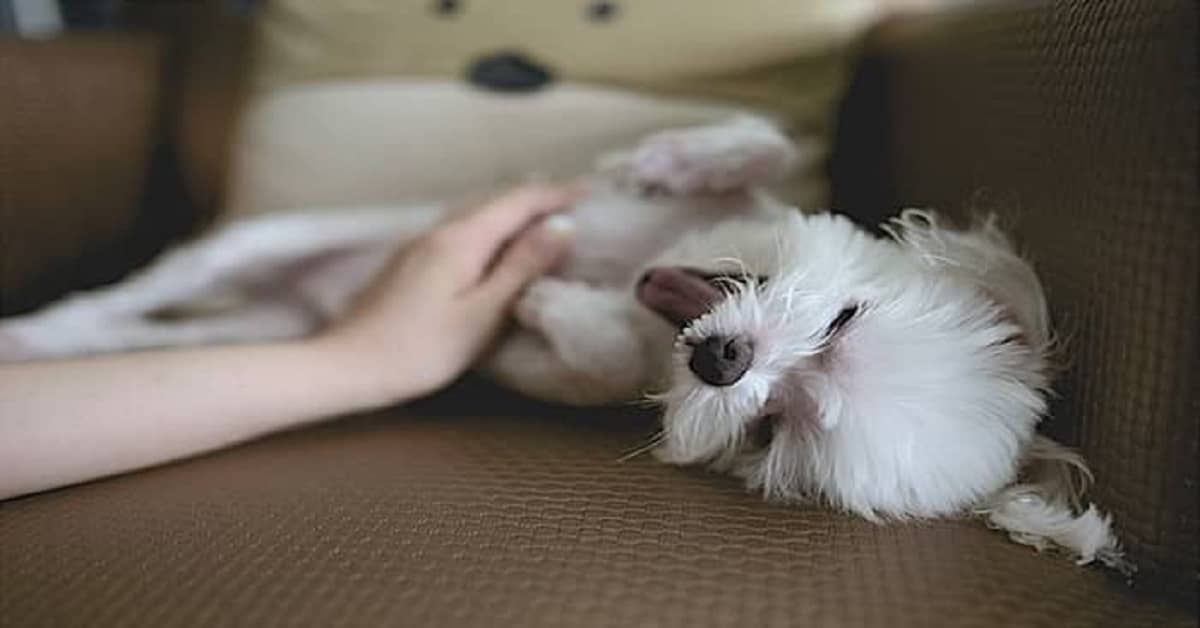You are playing with your puppies, running your hands through their hair and belly, as you run your hands through their belly, you notice a few bumps here and there and that seems ok for you, but then you run your hands through one of them and his bump count doesn’t match up to the others. Worse still, you can’t feel the bump for one of them.
So, what does this mean? Why is the nipple count incomplete? Is your puppy missing a nipple? Is he or she missing some nipples? What does this mean for my puppy and what are the health implications?
So many questions would be running through your mind, but to summarize the answer to the question, why is my puppy missing a nipple? Here are the possible reasons.
1.The nipple is not in the locations you are searching for in your puppy.
2.Your puppy has odd numbers of nipples and not an even number.
3.Your puppy or dog might have health issues affecting the nipples.
Before we dive in to explain in detail the summarized answers for why your puppy’s nipple is missing, let us explain what a nipple is in a dog.
Nipples are small bumps usually found in the stomach region of your dog. Both male and female dogs do have nipples (just like the human male and female). The difference being that the female dog nipple is used for reproductive and nurturing purposes while the male nipple doesn’t have much use.
The female dog nipple can produce milk after birth for the nurturing of her puppies (as far as the dog has not been spayed and neutered).
Generally, a grown dog is expected to have between six to ten nipples and they are mostly more visible in the female than the male.
Having gone through the above, let us now delve more into why your puppy might be missing a nipple.
1.The nipple is not in the locations you are searching for in your puppy
Most dog parents search for their dog’s nipples around the stomach region of their dogs and for most dogs, you will find out everything you need to find about your dog’s nipples here, but this is not so for all dogs.
Dog nipples have been known to be found in unusual places, for example, some dogs have nipples inside their legs and some do have them at their sides, etc.
But why would a dog develop nipples in these locations on their body?
Medically speaking, there are lines that a nipple has to follow during the development of its placenta. These lines extend from the forelimb to the hind leg. These lines are the places through which the nipple develops on our dogs. What happens sometimes is that these lines stray into areas that they don’t normally go through.
If you happen to find a fleshy bump under your dog’s leg or in some other abnormal place, first check the opposite location, if there is a bump their chances are that those are nipples.
But to be very sure about what it is, you should take your dog to your vet doctor to properly verify what exactly the bump is.
2.Your puppy has odd numbers of nipples and not an even number.
The number of nipples on a dog varies from breed to breed but generally, the number ranges from six to ten nipples in a dog. Most people expect nipples to come in even numbers, but nature doesn’t always work out like that.
Sometimes they come in even numbers of five, seven, nine, etc. and their placements are not always equal. This uneven placement makes it look as if your puppy is missing some nipples.
The fact is that the placement of the dog’s nipples is not as equal as we expect them. The main thing to always look out for is if there is some deformity or damage to the existing nipples and not their distribution.
3.Your puppy or dog might have health issues affecting the nipples
This mainly affects female dogs during reproduction. The physical symptom of this problem is that the whole nipple area is swollen and the nipple is hard to identify. Swollen nipples are usually an indication of an infection or a more serious problem like cancer.
There are two main types of health issues that affect our dogs’ nipples. These are:
Mastitis
Mammary gland tumor
So, what is mastitis?
Basically, mastitis is an infection of a dog’s mammary glands. This health problem is very common in female dogs, especially those that are in the process of nursing their puppies. The nipples and mammary glands of the dog get swollen and are very painful for her.
The signs of mastitis in an infected dog is usually visible two weeks after she has delivered her puppies. This infection tends to spread fast if left untreated, so if you suspect something like this please quickly inform your vet doctor.
Common physical manifestations of mastitis are Refusal to nurse her puppies, Discolored milk, Lumpy and painful nipples, Blood in milk, dehydration, and Crying.
Mammary gland tumor.
This condition is also associated with nipple health problems. This is usually a mass growth around the nipple area. This mass growth (or tumor) can be hard or soft and usually ends up developing into an abscess. The color of this tumor can vary from red to purple.
Be watchful of this tumor, if there is bleeding then it’s likely that your dog’s tumor has developed into an advanced form of cancer.
A final word of mammary gland tumor. It can be benign (which means it is soft and takes time to develop) or malignant (which means it irregular and develops fast).
Dealing with dog nipple health issues.
The best you can do for your dog if she is experiencing mastitis or mammary gland tumor is to consult a vet doctor immediately.
Looking at mastitis, this is caused by bacteria infecting the mammary gland, this infection can be through a contaminated environment or a scratch (usually by puppies when trying to suck from their mother).
So how does the vet doctor deal with this? First, he or she would retrieve a milk sample from the affected dog’s nipple. This milk sample would be subjected to some laboratory tests for pus and bacteria. Sometimes the dog’s blood sample would be taken to check for blood cell counts in her system currently.
If the vet doctor suspects that the infection is together with a tumor, an ultrasound may be required to verify the suspicion.
In the end, the vet doctor needs to verify the type of antibiotic and dosage that should be given to your dog. Also, there might be a need to apply compressions on the swollen nipple.
NB. There is a condition called galactostasis that is linked to mastitis, if this condition is found in your dog, then there would be a need to withhold water and food for up to twenty-four hours while another treatment is being carried out.
Looking at mammary gland tumors, a biopsy is usually done to determine if their cancer cells are in the dog’s mammary gland. Samples of this are sent to the lab to determine if the tumor is benign or malignant.
Some other tests like x-rays and ultrasound are taken to determine how far cancer has spread in the dog body.
If the cancer is just in the tumor region or in one place, then surgery can be performed to remove the cancerous cells to prevent them from growing again.
If it is already widespread, then the best thing that can be done for your dog at this stage is chemotherapy treatment.
Prevention techniques for nipple health issues.
The best thing you can do to your dog to prevent such issues is to monitor your dog’s body state constantly (daily would be a good schedule). This doesn’t take time and just involves a quick look at your dog’s body while petting her (two to five minutes is usually ok for this).
The monitoring is basically to look out for scratched areas on your dog’s body.
Since there is a higher rate of your dog developing mastitis while nursing her young puppies, it is advisable to make sure that the puppy nails are well-groomed in other to prevent them from scratching her nipples while the puppies are sucking them.
Also, clip hairs near the nipple area to prevent any obstruction when the puppies are feeding.
Proper grooming for the dog at this stage is important to make sure her body is free from bacteria and germs.
Also, a clean and well-maintained environment is important not just for your dog but for the puppies at this stage.
If your dog has undergone surgery for a benign infection, make sure to maintain your regular appointment with your vet doctor till your dog has been put in the clear. Also, continue monitoring your dog for any signs of infection in the future.
It is advisable to monitor the health state of your dogs’ nipples as animal hospital treatments can be very pricy. For mastitis treatment price can range from three hundred dollars to a thousand five hundred dollars, while mammary gland tumors can range from a thousand dollars to seventeen thousand dollars.
As you can see, a little maintenance of your dog’s environment and proper grooming can save you a lot of money.

Hi, I am Charles Nwankwo Editor-in-Chief, Mydoggything.com. Gleaning from Professional Dog Trainers, behaviorist, Registered Veterinarians, and Breeders. We are passionate about making dog care easy for you. My job is to make sure that you get the best-updated dog care information to understand and take care of your dog or dogs.

